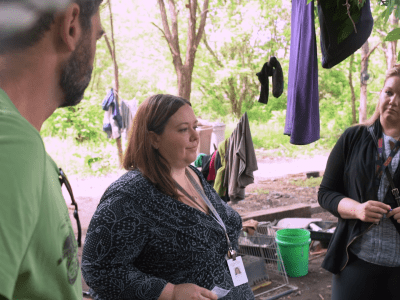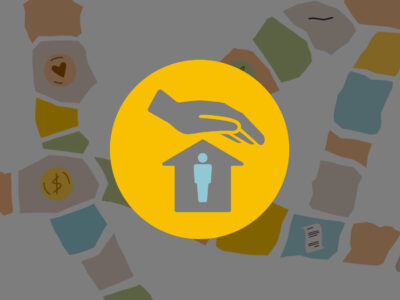My interactions with communities, partners and funders in the work to end homelessness are typically energizing. I hear conversations that inspire and challenge me on a regular basis. I also occasionally hear conversations that concern me, and I want to address one of those conversations here: the conversation about whether the VI-SPDAT, a brief survey that helps communities match people experiencing homelessness to housing and service options, is the “right” or “wrong” way to prioritize people for available housing.
In short, people want to know whether they should prioritize individuals for housing based on VI-SPDAT score or some other set of criteria. The answer is that communities should be weighing many factors and constantly analyzing their own data to inform and refine their prioritization strategies.
Let me be clear that common assessment tools, and the coordinated entry systems they support, have transformed our sector. They have reframed our discussions around the most vulnerable and brought critical data and rigor to the fight against an old-school, first-come-first-served approach to providing housing. But they’ve also created a bit of a trap for folks on the frontlines. I call it the Robot Trap: the notion— the hopeful wish, even— that the VI-SPDAT and tools like it can eliminate the need for human judgment in housing decisions.
We have co-developed and refined the VI-SPDAT with our partners at OrgCode, so take it from us: homelessness is a complex problem, and it won’t be solved by robots. The VI-SPDAT, and other tools like it, are just that— tools. They are only as useful as the experience and judgment of the people in whose hands they rest.
In the service of ensuring that this conversation accelerates our progress, here are a few thoughts on the issue:
The VI-SPDAT is not a silver bullet.
Ending homelessness is messy and hard. It would be easier if there were a tool that could just tell us what to do in every situation. That tool doesn’t exist, and it certainly isn’t the VI SPDAT. The VI-SPDAT and other common assessment tools help us escape the first-come-first-served mentality and respond to individuals, rather than asking them to respond to us. But human beings, with their critical thinking skills, observations and ability to leverage other key pieces of information, will always be critical to the housing process. The idea here is to use the VI-SPDAT, not to surrender to it. Remember what the last three letters of the acronym stand for – decision assistance tool. It is not intended to be a decision making tool.
Prioritization not Paralysis.
The VI-SPDAT allows a community to examine a person’s current vulnerability and future risk of housing instability. These are critical factors when a community is looking to prioritize limited housing and service resources. There are additional factors to consider which could include but are not limited to length of time someone has been homeless, multiple system interactions, and veteran status. When our team, or Org Code’s team, works with communities on building coordinated entry systems, we coach them not only to look at VI-SPDAT scores, but also to conduct deeper analysis of by-name list data to help target available resources, advocate for new resources, and prioritize target populations for housing. If your community has committed to ending chronic homelessness, for example, you should absolutely be including length of time spent homeless and documented disability in your prioritization calculus. We don’t have time for a dogmatic view of prioritization. What matters is that you have a fast enough data feedback loop, via your by-name list, to figure out if your approach is working and to make adjustments over time.
Act with Urgency. Learn. Adjust.
When solving complex problems, the key is to embrace a culture of improvement and iteration. The VI-SPDAT and other tools can help you do that with a baseline level of rigor by helping you set up a prioritization policy and start using it. That being said, there’s no substitute for analyzing your data and assessing the impact of your prioritization policy in short cycles. When it comes to prioritization, or any strategy for ending homelessness, there is no such thing as “set it and forget it.” We have to set up the capacity and skill set within our teams and our local systems to track and analyze the effects of our approaches in real time. What happened? What are we learning? Where are the gaps or unintended consequences? What does this tell us about the adjustments we need to make to our prioritization policy? Plan. Do. Study. Act. Then repeat the cycle.
It’s tempting to use the VI-SPDAT and tools like it to get us all out of having to make difficult decisions, but ending homelessness requires that we use our judgment, our experience, and all available information, including VI-SPDAT scores. If your prioritization policy can’t be nuanced or changed to accommodate what your data is telling you, it’s time to revisit it.




